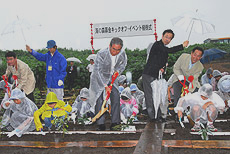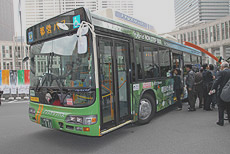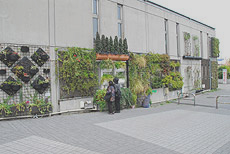Hokkaido Toyako Summit
Venues

In formulating the "Tokyo's Big Change - The 10-Year Plan"(a near future vision of the city) in December 2006, the authorities made clear the type of city they would aimed at in order for Tokyo, which has developed as the brain hand heart of the nation, to reach an even higher level that can be passed down to the next generation.
Tokyo is positioning global warming countermeasures, which will be a major theme at the Hokkaido Toyako Summit, as one of its major pillars of action under the "Tokyo's Big Change - The 10-Year Plan," and is developing the 10-Year Project for a Carbon Minus Tokyo, targeting a reduction in the city's CO2 emission volume of 25% by 2020 as compared with 2000. In order to achieve this goal, the city will work to make reducing CO2 emissions obligatory for large-scale offices and factories.
Moreover, in order to regenerate the greenery that absorbs CO2, Tokyo is actively promoting measures such as the creation of Umi no Mori (Sea Forest), which is an attempt to regenerate reclaimed land used for waste disposal in the Tokyo Bay waterfront area (an area equivalent to 5.5 times that of Hibiya Park) by turning it into woodland, and by more than doubling the number of roadside trees in the capital from 480,000 to one million.
In order to avoid climate change through global warming, shifting the world's CO2 emission volume toward a declining trend is an urgent task. From now on, Tokyo will continue to boldly promote pioneering initiatives with the aim of becoming "the city with the smallest environmental burden in the world," and in this way will make a contribution to global warming countermeasures.

